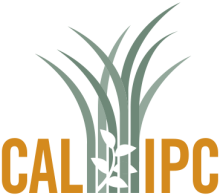Climate Matching Map
| Attachment | Size |
|---|---|
| climatematch-asparagus_aethiopicus-california-20251102.pdf (1.19 MB) | 1.19 MB |
1. Question 1
2. Question 2
3. Question 3
4. Question 4
5. Question 5
6. Question 6
7. Question 7
The Weeds of Australia website says "Ground asparagus (Asparagus aethiopicus 'Sprengeri') forms a thick mat of tuberous roots and grows particularly well in shaded areas and in sandy soils." "The dense growth of this species may form impenetrable thickets that smother native understorey plants and inhibit their regeneration, thereby transforming the ground layer of native plant communities."
8. Question 8
9. Question 9
10. Question 10
From the NSW Weed Wise website: "Ground asparagus forms dense blankets of growth above ground and a profusion of roots and tubers below ground which suppresses other ground flora and reduces available soil moisture and nutrients."
From Asparagus Weeds Management Manual "Asparagus aethiopicus creates vigorous thickets of foliage that forms dense spiny mats. It can quickly invade disturbed sites in open sun or partial shade. Plants can form monocultures that smother and displace native herbs and shrubs, and can form impenetrable root mats below the ground that may impede the growth of native seedlings. The above ground biomass can dominate the native ground and shrub layer."
11. Question 11
12. Question 12
13. Question 13
14. Question 14
Plants can also produce 3 seeds per fruit and if there are 2-3 seeds per fruit on some plants there will be over 1,000 seeds per plant.
15. Question 15
16. Question 16
17. Question 17
18. Question 18
19. Question 19
20. Question 20
Evaluation Notes
New Climate Match map and link added; typographical issues corrected for some references for new web platform. J. Burger (11/2/2025)






